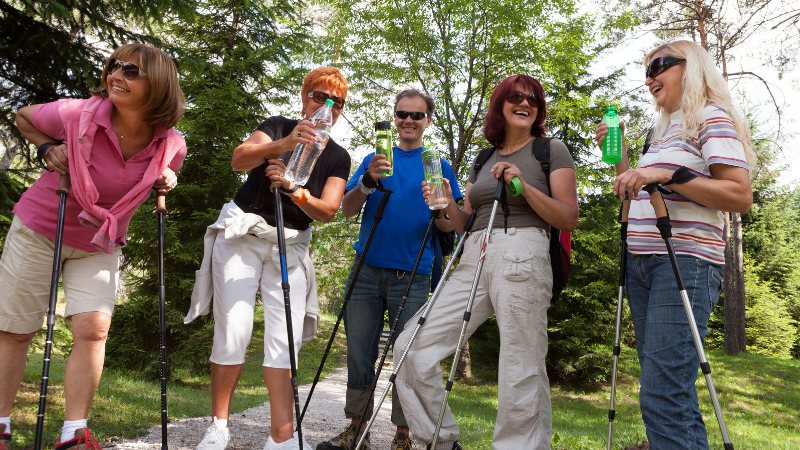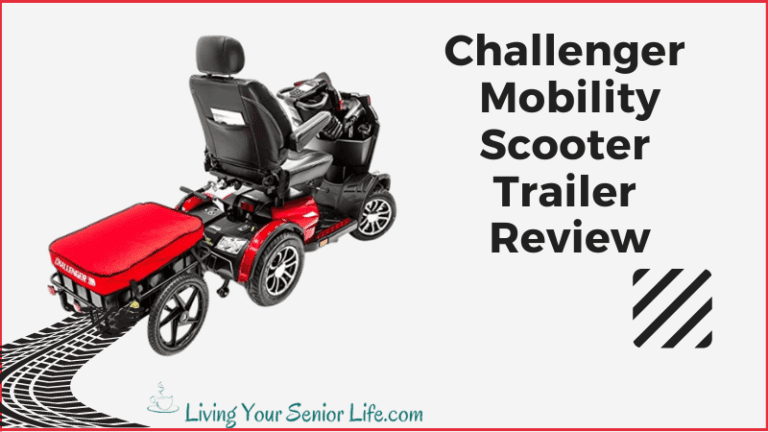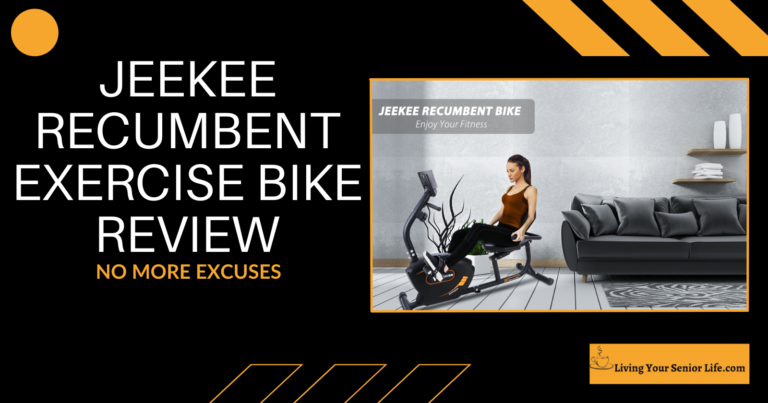Walking poles, often referred to as Nordic walking poles, trekking poles, or hiking sticks, have gained popularity as a valuable tool for older adults looking to maintain an active lifestyle. As a senior, incorporating walking poles into your regular walking routine can provide a myriad of health benefits, reduce joint stress, and promote better balance. In this blog post, we’ll explore the numerous benefits of using walking poles for seniors, discuss how to choose the right poles, and offer tips for getting started with this simple yet effective walking aid.
Whether you’re a seasoned hiker or simply looking to enjoy a stroll around the neighborhood, walking poles can be a game-changer for seniors looking to maintain their mobility, stability, and overall well-being. Let’s dive in and discover how walking poles can help seniors step confidently into each day.
Key Takeaways:
- Walking poles help seniors improve balance, reduce joint stress, and engage the entire body during exercise.
- Features like adjustable length, ergonomic grips, and wrist straps are important considerations for comfort and efficiency.
- Accessories and pole modifications can enhance safety and versatility across various terrains and weather conditions.
Video: Walking Poles For Seniors
What Are Walking Poles?
Walking poles, also known as hiking poles, trekking poles, or walking sticks, are tools designed to provide stability, support, and balance during various outdoor activities such as hiking, walking, trekking, and backpacking. These poles consist of lightweight materials like aluminum or carbon fiber and typically feature ergonomic grips, adjustable wrist straps, and durable tips for different terrains.
Why Would Someone Want Or Need Walking Poles?
There are several reasons why someone might need or want walking poles:
Improving Balance And Stability:
- Individuals who struggle with balance issues due to age, injury, or medical conditions such as Parkinson’s disease or vertigo can benefit from walking poles. The poles provide additional points of contact with the ground, helping to stabilize and support the body while walking.
- You may notice an immediate difference in your balance and stability when using the best walking poles. The extra points of contact with the ground provided by poles such as those made from high-quality carbon fiber, assist with coordination and reduce the risk of falls, especially on uneven terrain or hidden ice.
- Poles designed with ergonomic grips, such as natural cork grip, and wrist straps help maintain a comfortable angle and proper technique, fortifying stability whether you’re on a steep hill or flat ground. Some poles come with extra base pads or detachable feet for additional stability on hard surfaces or hidden ice.
Increased Endurance:
- Walking poles engage the upper body muscles, including the arms, shoulders, and core, which can help increase overall endurance during walking or hiking activities. This can be beneficial for individuals looking to improve cardiovascular fitness or participate in longer, more challenging walks.
Joint Pain or Weakness:
- People experiencing joint pain or weakness, particularly in the knees, hips, or ankles, may find walking poles helpful. The poles can help reduce the strain on these joints by providing support and redistributing weight more evenly across the body.
- For older adults, particularly those with joint pain or who have undergone procedures such as knee surgery or knee replacement, the right pole can offer necessary support. The best trekking poles have adjustable pole lengths and extra base pads or detachable feet, providing added support and cushioning for joints, reducing knee strain, and helping to maintain a proper standing position. Using trekking poles on various terrains can mitigate joint stress, which is valuable for maintaining an active lifestyle even with balance issues or after recent convalescence.
Long-Distance Walking:
- For individuals engaging in long-distance walking or hiking, walking poles can help reduce fatigue and strain on the body by providing additional support and balance throughout the journey.
Posture Support:
- Walking poles encourage an upright posture while walking, which can alleviate strain on the spine and promote better spinal alignment. This can be particularly beneficial for individuals with posture-related discomfort or those looking to improve their posture over time.
Rehabilitation:
- Following surgery or injury, walking poles can aid in the rehabilitation process by providing support and stability during walking exercises. They can help individuals gradually rebuild strength, endurance, and confidence as they regain mobility.
Safety:
- Walking poles can serve as a safety measure, especially when hiking in remote or rugged areas. They can help prevent slips and falls on steep inclines or unstable surfaces and provide stability when crossing streams or navigating challenging terrain.
Terrain Variation:
- Walking poles are versatile tools that can be used on a variety of terrains, including pavement, trails, gravel paths, and uneven surfaces. They provide stability and traction on slippery or uneven terrain, allowing individuals to navigate outdoor environments with confidence.
Overall, walking poles offer numerous benefits for individuals of all ages and fitness levels, from providing assistance with balance and joint support to enhancing endurance and safety during outdoor activities. Whether for leisurely walks around the neighborhood or adventurous hikes in nature, walking poles can help individuals stay active, mobile, and confident in their abilities.
Choosing the Right Walking Poles

Selecting the best walking poles for seniors involves understanding the functional features that make walking poles effective. High-quality poles, often made from materials like carbon fiber, boast a comfortable grip, often with cork grips or extra padding, and adjustable pole length to ensure they match your height perfectly. Features like wrist straps and ergonomic design contribute to a better support system, turning a daily walk into a full-body workout. It’s not just about having a set of poles; it’s also about finding poles with the proper technique to support activities like cross-country skiing or navigating a steep hill, without exacerbating bad knees or joint pain.
Consulting with a physical therapist can help ensure you’re picking the right pole with the correct height and thumb positions, which is particularly important after events such as knee surgery or replacement.
When selecting walking poles, it’s crucial to find a pair that meets your needs for comfort, stability, and value. Consider these key points before making a purchase.
Comfort and Grip
The grip on your walking poles should be a comfortable angle for your wrists and hands. Cork grips conform to your hands over time, offer extra padding, and can absorb some sweat, which is beneficial when on a daily walk. EVA foam grips are softer and may provide immediate comfort at a lower price point. Ensure that your poles have ergonomic grips with a variety of thumb positions to reduce the chance of worse elbows and bad knees. Wrist straps add added support and help maintain proper technique. Your walking poles should include wrist straps for added support and to help maintain a comfortable grip. Look for straps with extra padding, especially if you have joint pain or balance issues. The straps should be adjustable to fit your wrist securely.Some poles come with extra base pads or detachable feet for additional stability on hard surfaces or hidden ice.
Materials and Durability
Walking poles, also known as trekking or hiking poles, are most commonly made from aluminum or carbon fiber. Aluminum poles are strong and can withstand pressure when trekking over various terrains. They are often at a more affordable price compared to carbon fiber. Carbon fiber poles are lightweight and can reduce joint stress, but they might be more prone to snapping if they get caught between rocks on uneven terrain.
Pole Adjustability and Locking Mechanisms
Adjustability is key for proper technique and comfort. Adjustable pole options include telescoping, folding, and trifold designs. These allow for plenty of adjustments to match your height, providing better support and reducing the risk of falls.
Make sure to select poles with high-quality locking mechanisms that can withstand regular wear and tear, ensuring long-lasting service. Flip locks are preferred for their easy handling and robustness, enabling plenty of adjustments for the right pole length, vital for stability on uneven terrain.
The exclusive flip-lock mechanism is frequently found in top brands like Black Diamond and York Nordic, offering secure locking at the correct height. This feature enables poles to be easily adjusted for use on everything from flat ground to a steep hill.
Pole Tips and Baskets
Pole tips are designed to provide traction on different surfaces. Carbide tips are best for gripping ice or rocky terrain, whereas rubber tips are better suited for hard surfaces. Many top brands offer interchangeable tips, so you can switch between carbide for hidden ice on winter days, or rubber tips for a daily walk on the pavement.
Baskets, often seen on ski poles and cross-country skiing gear, are another consideration for seniors. They prevent poles from sinking into soft ground such as snow or sand, and can be especially useful for senior trekkers in snowy regions or on the beach.
Shock Absorption
Walking poles with shock absorbers can reduce the impact on joints, which is an absolute game changer for older adults managing joint pain or recovering from knee surgery. The shock absorption feature, typically using springs in the lower sections, assists in mitigating the forces exerted on the body during a walk. This leads to a more comfortable grip and allows for a more active lifestyle while minimizing the risk of falls. Ensure your set of poles includes this for added support, particularly if you venture onto rocky or uneven terrain.
Special Considerations for Seniors

As older adults, certain aspects like ergonomic design, proper technique, and extra support reduce the risk of falls and decrease joint stress. Nordic walking poles are beneficial, as they engage your entire body, offering health benefits such as improved heart rate and upper body strength. Consult a physical therapist to find the correct height and comfortable angle especially after knee surgery or for those with arthritis.
- Adjustable telescopic poles: Allow for plenty of adjustments, ideal for those who have undergone knee replacement.
- York Nordic poles: Recognized for their unique design, providing better balance and extra support, tailored for senior trekkers.
Maintaining Your Poles
Regular maintenance of your walking poles is paramount for preserving their high quality and ensuring they remain the best poles for you. Check the pole tips for wear and tear, especially if you often walk on hard surfaces or uneven terrain. Replace the tips if they show significant wear to maintain effective grip and prevent damage to the poles. Poles made from materials like carbon fiber are known for their durability and lightweight nature, yet even these require occasional checks. Look for poles with a warranty to safeguard your investment.
- Maintenance Checklist:
- Inspect pole tips for wear
- Ensure screws and locking mechanisms are tight
- Clean poles after use in dirt or mud
Storing your poles is made simple with a compact design; many of the best trekking poles are telescopic, folding versions that offer plenty of adjustments for easy storage.
By focusing on proper strap usage and regular maintenance, your walking poles will remain reliable companions on your walks across all kinds of terrains.
Frequently Asked Questions
In this section, you’ll find answers to common questions about walking poles to ensure safety and efficiency for seniors when choosing and using these walking aids.
How do you determine the correct height for walking poles?
To determine the correct height, you should stand with your arms at your sides and elbows at a 90-degree incline; the pole handle should be at the level of your wrist when its tip touches the ground. Adjustable poles offer plenty of adjustments to suit your standing position and comfort.
What distinguishes walking poles from traditional walking sticks?
Walking poles, designed specifically for an active lifestyle, commonly come with wrist straps and a pair of poles for equal weight distribution. Conversely, traditional walking sticks, such as a single stick cane, often lack these features and are used more for balance than full mobility support.
What criteria should be considered when choosing walking poles for seniors with bad knees?
Seniors with bad knees should look for poles with shock absorption features, such as an extra base pad, to reduce joint stress. Features like cork grips tend to be more comfortable for longer walks, while poles with extra padding or ergonomic grips are important considerations for added support.







